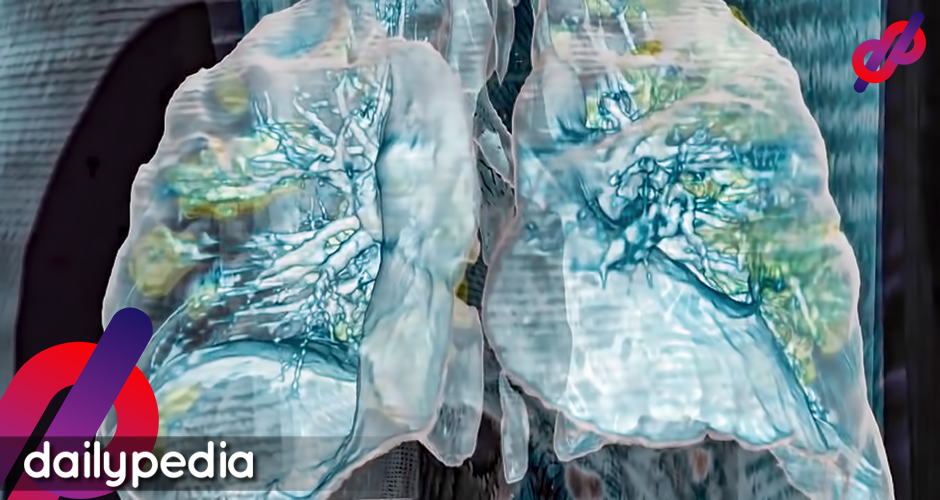Clinicians and pathologists still have much to learn about the coronavirus.
It is clear that the lungs are the main target, but the virus has been observed spreading and affecting various organs such as the heart and blood vessels, kidneys, gut, and brain.
Cardiologist Harlan Krumholz of Yale University and Yale-New Haven Hospital, who is leading multiple efforts to gather clinical data on COVID-19, says the virus can cause tremendous damage.
“[The disease] can attack almost anything in the body with devastating consequences. Its ferocity is breathtaking and humbling.”

Nilam Mangalmurti, a pulmonary intensivist at the Hospital of the University of Pennsylvania (HUP), thinks that “taking a systems approach may be beneficial as we start thinking about therapies.”
The body cells are infiltrated, with 5% of those becoming severely sick.
Nancy Reau, a liver transplant physician who has been treating COVID-19 patients at Rush University Medical Center says it is necessary “to keep a very open mind as this phenomenon goes forward. We are still learning.”
Scientists at the Wellcome Sanger Institute and those from other institutions say that when a droplet from an infected individual is inhaled by an uninfected one, the SARS-CoV-2 goes into the throat and stays around the lining of the nose.
Cells in the nose linings are filled with a cell-surface receptor called angiotensin-converting enzyme 2 (ACE2).
The virus is able to infiltrate ACE2 and makes countless copies of itself which will also invade other cells.
Usually during the first week of getting infected, a person would inevitably shed extensive amounts of the virus.
https://www.instagram.com/p/B_QY3-HJT6-/
Most infected patients would exhibit symptoms such as fever, dry cough, sore throat, loss of smell and taste, or head and body aches.
SARS-CoV-2 will then be able to explore and eventually get to the lungs in the event the immune system doesn’t destroy it in this stage.
ACE2 receptors are also found in alveoli, which are sacs that enable oxygen to travel throughout the body. The virus disrupts this process which triggers white blood cells to release chemokines that summon immune cells to destroy virus-infected cells.
This causes pneumonia, but the worst-case scenario is the development of acute respiratory distress syndrome (ARDS), where breathing becomes more difficult to the point the patient needs the help of a ventilator. Not a lot recover from this. Autopsies have shown that at this stage, alveoli are filled with fluid, white blood cells, mucus, and the detritus of destroyed lung cells.
SARS-CoV-2 gets to the lungs and does a lot of damage. The way the body or the virus responds to this then injures other organs and is labeled by clinicians as a “cytokine storm,” which is basically the overreaction of the immune system that also attacks healthy cells.
Jamie Garfield, a pulmonologist who at Temple University Hospital, thinks that the immune system itself is a big reason why a lot of damage is being inflicted.
“The real morbidity and mortality of this disease is probably driven by this out of proportion inflammatory response to the virus.”
However, Joseph Levitt, a pulmonary critical care physician at the Stanford University School of Medicine is not convinced.
“There seems to have been a quick move to associate COVID-19 with these hyperinflammatory states. I haven’t really seen convincing data that that is the case.”
There are drugs designed to suppress cytokines, but this could only lessen the effectiveness of the immune system in fighting the virus.
“There’s a real risk that we allow more viral replication,” Levitt says.
There is still no clear answer to how the virus attacks the heart.
Behnood Bikdeli, a cardiovascular medicine fellow at Columbia University Medical Center says a lot of COVID-19 patients have died from pulmonary embolism caused by blood clots. Arterial blood clots can get to the brain and cause patients to suffer from a stroke.
“The more we look, the more likely it becomes that blood clots are a major player in the disease severity and mortality from COVID-19,” Bikdeli says.
In the lungs, blood vessel constriction might help explain anecdotal reports of a perplexing phenomenon seen in pneumonia caused by COVID-19: Some patients have extremely low blood-oxygen levels and yet are not gasping for breath. It’s possible that at some stages of disease, the virus alters the delicate balance of hormones that help regulate blood pressure and constricts blood vessels going to the lungs.
So oxygen uptake is impeded by constricted blood vessels, rather than by clogged alveoli.
“One theory is that the virus affects the vascular biology and that’s why we see these really low oxygen levels,” Levitt says.
Diebetic and hypertensive people have damaged blood vessels which is why they are more likely to die since COVID-19 loves attacking blood vessels.
Mangalmurti says she has been “shocked by the fact that we don’t have a huge number of asthmatics” or patients with other respiratory diseases in HUP’s ICU.
“It’s very striking to us that risk factors seem to be vascular: diabetes, obesity, age, hypertension,” she said.
Krumholz added that further studies on why cardiovascular damage happens is much needed.
“We’re still at the beginning. We really don’t understand who is vulnerable, why some people are affected so severely, why it comes on so rapidly … and why it is so hard [for some] to recover.”
From treating over a thousand COVID-19 patients, neurologist Jennifer Frontera of New York University’s Langone Medical Center concluded that “If these folks are not dying of lung failure, they’re dying of renal failure.”
One study has suggested that 27% of 85 hospitalized patients in Wuhan had kidney failure. Another reported that 59% of nearly 200 COVID-19 patients in and near Wuhan protein also had kidney damage. Patients that suffered from acute kidney injury (AKI), were more than five times as likely to die as COVID-19 patients without it.
Hongbo Jia, a neuroscientist at the Chinese Academy of Sciences’s Suzhou Institute of Biomedical Engineering and Technology and a co-author of that study says the kidneys are very vulnerable.
“The lung is the primary battle zone. But a fraction of the virus possibly attacks the kidney. And as on the real battlefield, if two places are being attacked at the same time, each place gets worse.”
Antiviral drugs like remdesivir, along with ventilators, will accelerate the chances of kidney damage. Blood flow to the kidney also happens when cytokine storms are present.
Suzanne Watnick, chief medical officer at Northwest Kidney Center, said that “there is a whole bucket of people who already have some chronic kidney disease who are at higher risk for acute kidney injury,”
Brains have their own version of cytokine storm called the “sympathetic storm,, as observed by Frontera.
https://www.instagram.com/p/B_QY25qjaEZ/
COVID-19 patients have been seen to lose consciousness, and suffer from a stroke.
Robert Stevens, an intensive care physician at Johns Hopkins Medicine says ACE2 receptors are also found in the neural cortex and brain stem but the process of how the virus affects the brain remains unknown.
Chou speculates about a possible invasion route: through the nose, then upward and through the olfactory bulb—explaining reports of a loss of smell—which connects to the brain. “It’s a nice sounding theory,”
“We really have to go and prove that,” she says.
Most neurological symptoms “are reported from colleague to colleague by word of mouth,” Chou adds. “I don’t think anybody, and certainly not me, can say we’re experts.”
Brennan Spiegel of Cedars-Sinai Medical Center in Los Angeles notes that a good number of COVID-19 patients have diarrhea. The CDC doesn’t recognize gastrointestinal signs as COVID-19 symptoms which can cause undetected COVID-19 cases.
“If you mainly have fever and diarrhea, you won’t be tested for COVID,” says Douglas Corley of Kaiser Permanente, Northern California, co-editor of Gastroenterology.
If the virus reaches the gastrointestinal tract, it is possible that feces could transmit it, but further studies are needed to confirm this.
To date, “We have no evidence” that fecal transmission is important, says coronavirus expert Stanley Perlman of the University of Iowa.
But based on experiences with other coronaviruses including SARS, the CDS says that this is unlikely to happen.
Two preprints have reported that in two Chinese centers, patients suffered from injuries to the liver and bile ducts.
Other factors such as drugs can also deliver damage to the gastrointestinal tract, so further studies are needed on this matter.
There are now 2,543,588 confirmed cases, with 176,596 deaths worldwide.


